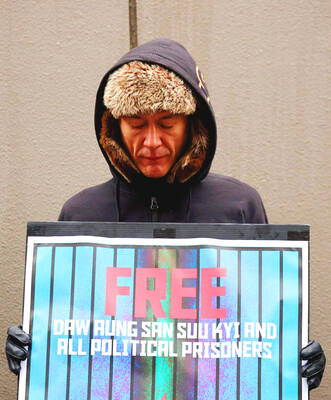Up close, erythroxylum coca looks almost pretty — a plant with curving branches, green leaves and small yellow flowers that mature into red berries.
It has been cultivated on the slopes of the Andes and invested with divine properties. When chewed, its leaves act as a mild stimulant.
But these virtues do not alter the fact that having an ideal climate and terrain for coca — the raw ingredient of cocaine — has been a catastrophe for Colombia. The crop has wrought violence, narco-trafficking and corruption.
Divine or otherwise, coca has proved resilient, verging on indestructible, in withstanding the decades-old “war on drugs” declared by former US president Richard Nixon and prosecuted by successive US presidents.
Military helicopters continue to scythe over treetops in the Colombian jungle and hundreds of millions of dollars are still poured into the fight — but there is a growing conviction that it cannot be won.
It may evolve and change shape, move from jungles to cities and from bloody battles to discreet bribes, but it will not end with a flag planted in the ground and victory declared.
An individual coca bush is fragile, but the forces behind it are powerful and adaptable: peasant farmers who turn the leaves into paste, clandestine laboratories that turn it into powder, guerrillas and armed gangs who traffic it abroad, middle men and state authorities who launder the revenue. Each link in the chain has a strong incentive.
A peasant in certain remote parts of Colombia has a choice: grow corn, rice, potatoes and vegetables for prices that fluctuate and sometimes barely make it worthwhile, or grow coca, safe in the knowledge of a handsome return.
Colombia’s US-backed eradication effort includes satellites and fumigation-spraying aircraft, but growers have adapted with more resistant strains and smaller plots hidden under taller plants.
Government inducements to wean peasants off coca with loans and alternative economic activities have faltered.
“Government policies related to zero coca, and strict verification procedures, take a long time and limit the state’s ability to work with communities in transitioning from a coca economy to a legal economy,” a US Agency for International Development report said.
“When security and coca eradication are not synchronized with the arrival of socio-economic projects, the mood of a community can quickly become hostile,” it said.
A new book, Shooting Up: Counter-insurgency and the War on Drugs, by the respected Brookings Institution scholar Vanda Felbab-Brown, says eradication campaigns in Colombia have left drug production unaffected but alienated locals, gifting political capital to insurgents.
Plan Colombia, the military-heavy US aid program, has had significant success in helping the country’s security forces push Revolutionary Armed Forces of Colombia (Farc) guerrillas out of cities and deep into the jungle.
Colombia now has political stability, a growing economy and a popular president, Alvaro Uribe. But Farc and another rebel group, the ELN, continue to traffick cocaine.
In recent months, Farc has made a military comeback, ambushing troops and kidnapping and killing a provincial governor.
Rightwing paramilitary groups also remain in the game. Originally set up by ranchers in the 1980s to combat leftist guerrillas, the paramilitaries mutated into narco-trafficking private armies.
They controlled swaths of territory and co-opted businesses and politicians until a government scheme from 2005 demobilized 32,000. Many leaders were extradited to the US, but many lower-ranking “paras” who failed to find jobs or promised state assistance have returned to trafficking drugs.
A recent report — Paramilitaries’ Heirs: The New Face of Violence in Colombia — makes grim reading.
The city of Medellin, once the showcase of Colombia’s counter-narcotics fight, illustrates the intractability of the problem. A steep fall in violence paved the way for an apparent urban renaissance, but murder rates rose again last year as drug gangs battled for control.
Prominent local figures are now trying to negotiate a truce. That has raised suspicion of a return to the era of discreet pacts, when officials gave cartels free rein to traffick cocaine in return for social peace.
With victory in the so-called drug war ever more elusive, there are growing calls around the world to decriminalize cocaine.
The logic goes that decriminalization could put traffickers out of business. It is an experiment no government has yet dared to try.

The Burmese junta has said that detained former leader Aung San Suu Kyi is “in good health,” a day after her son said he has received little information about the 80-year-old’s condition and fears she could die without him knowing. In an interview in Tokyo earlier this week, Kim Aris said he had not heard from his mother in years and believes she is being held incommunicado in the capital, Naypyidaw. Aung San Suu Kyi, a Nobel Peace Prize laureate, was detained after a 2021 military coup that ousted her elected civilian government and sparked a civil war. She is serving a

‘NO AMNESTY’: Tens of thousands of people joined the rally against a bill that would slash the former president’s prison term; President Lula has said he would veto the bill Tens of thousands of Brazilians on Sunday demonstrated against a bill that advanced in Congress this week that would reduce the time former president Jair Bolsonaro spends behind bars following his sentence of more than 27 years for attempting a coup. Protests took place in the capital, Brasilia, and in other major cities across the nation, including Sao Paulo, Florianopolis, Salvador and Recife. On Copacabana’s boardwalk in Rio de Janeiro, crowds composed of left-wing voters chanted “No amnesty” and “Out with Hugo Motta,” a reference to the speaker of the lower house, which approved the bill on Wednesday last week. It is

Seven wild Asiatic elephants were killed and a calf was injured when a high-speed passenger train collided with a herd crossing the tracks in India’s northeastern state of Assam early yesterday, local authorities said. The train driver spotted the herd of about 100 elephants and used the emergency brakes, but the train still hit some of the animals, Indian Railways spokesman Kapinjal Kishore Sharma told reporters. Five train coaches and the engine derailed following the impact, but there were no human casualties, Sharma said. Veterinarians carried out autopsies on the dead elephants, which were to be buried later in the day. The accident site

‘EAST SHIELD’: State-run Belma said it would produce up to 6 million mines to lay along Poland’s 800km eastern border, and sell excess to nations bordering Russia and Belarus Poland has decided to start producing anti-personnel mines for the first time since the Cold War, and plans to deploy them along its eastern border and might export them to Ukraine, the deputy defense minister said. Joining a broader regional shift that has seen almost all European countries bordering Russia, with the exception of Norway, announce plans to quit the global treaty banning such weapons, Poland wants to use anti-personnel mines to beef up its borders with Belarus and Russia. “We are interested in large quantities as soon as possible,” Deputy Minister of National Defense Pawel Zalewski said. The mines would be part